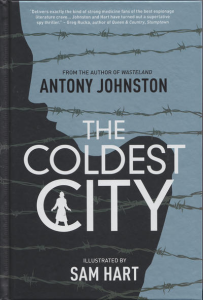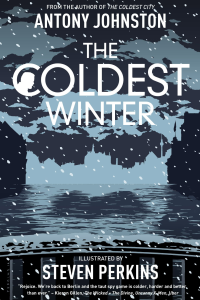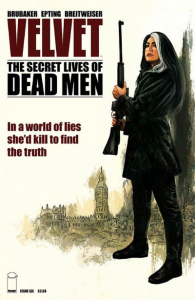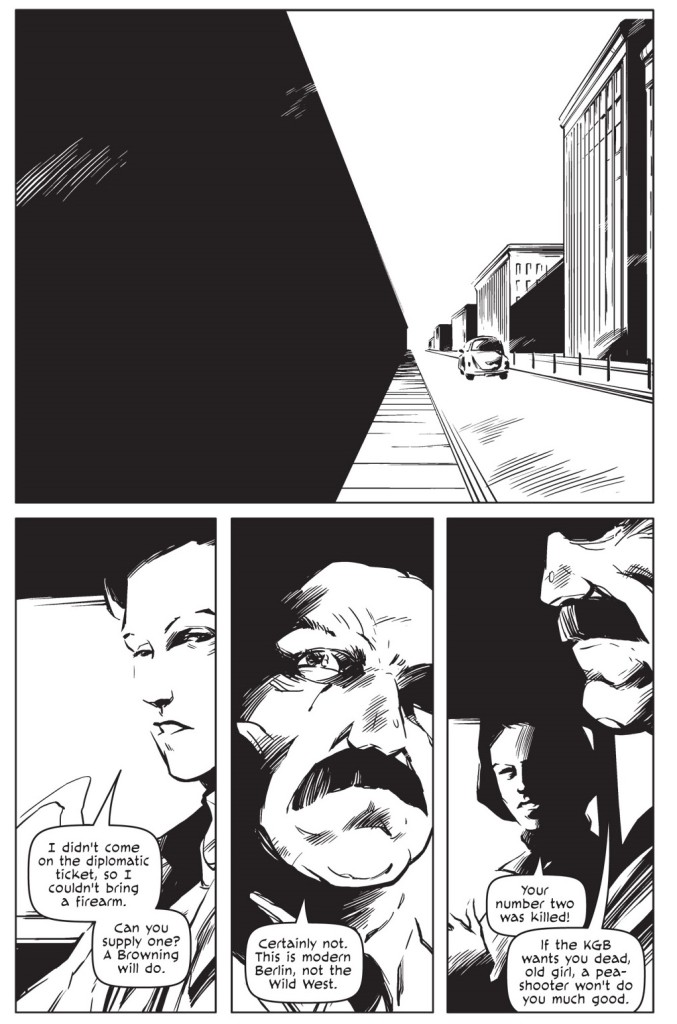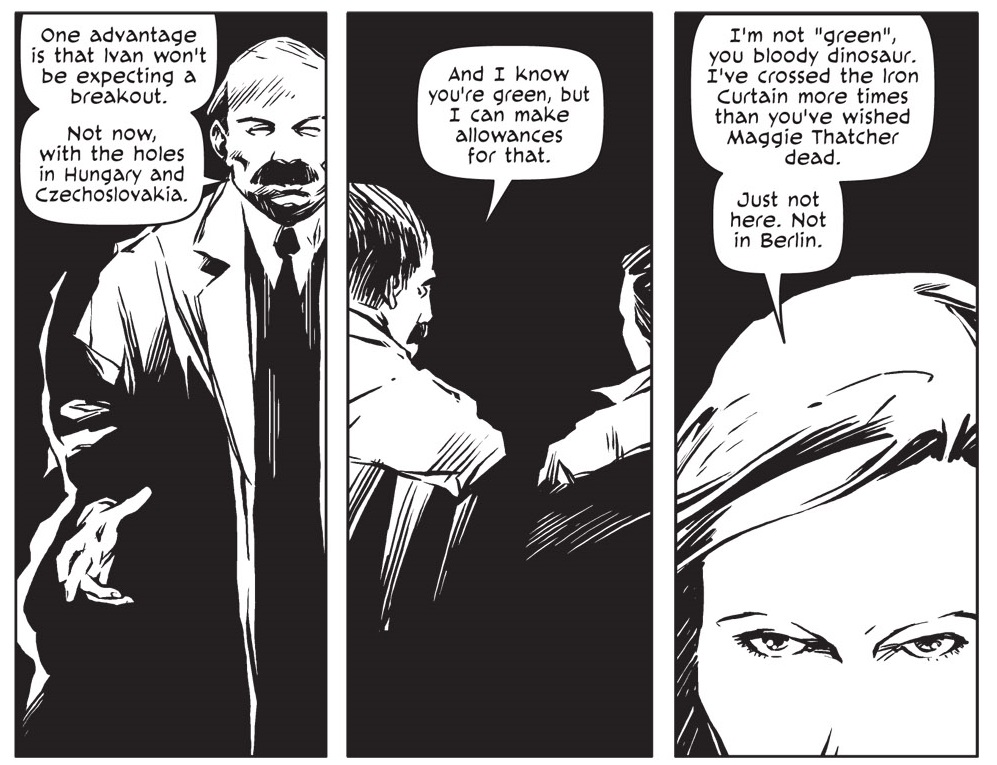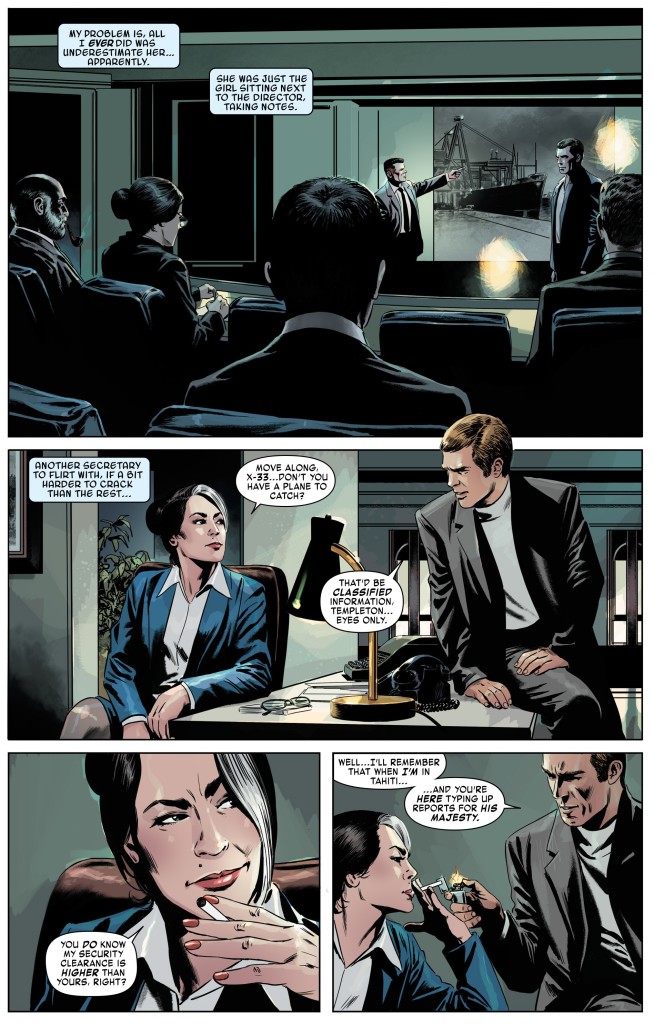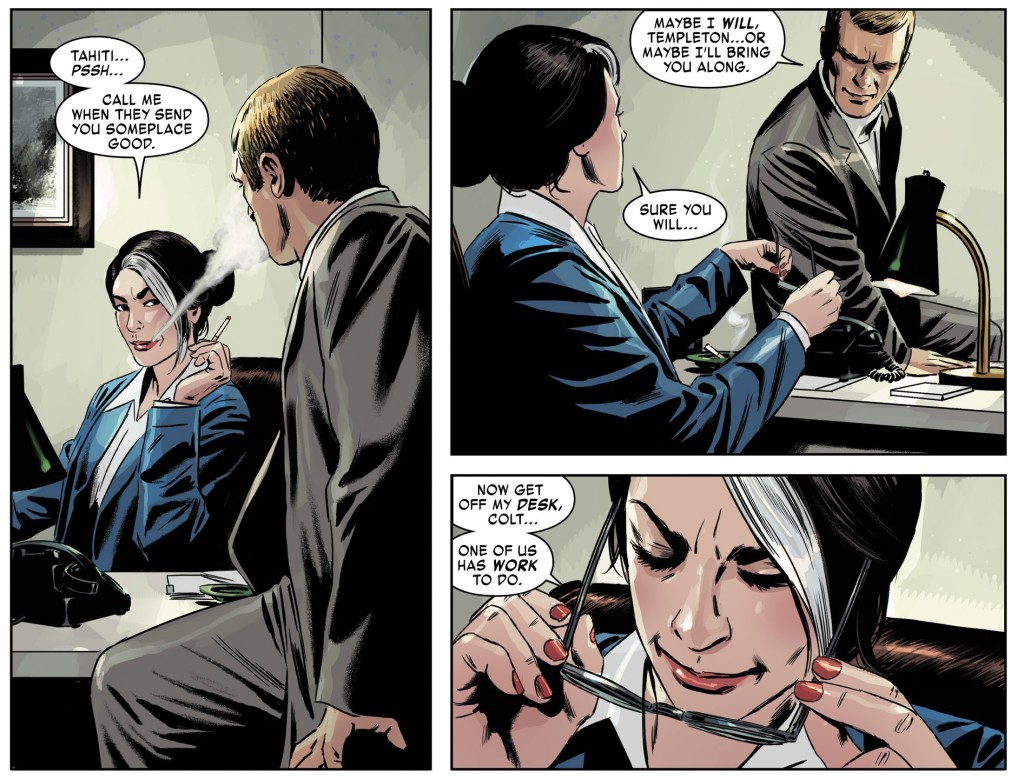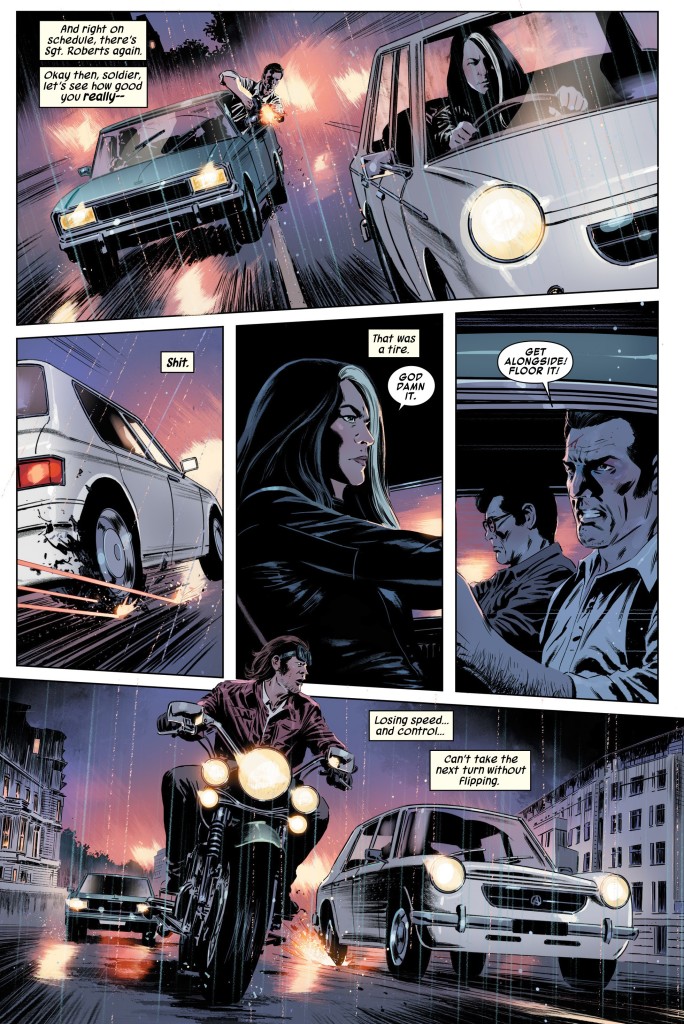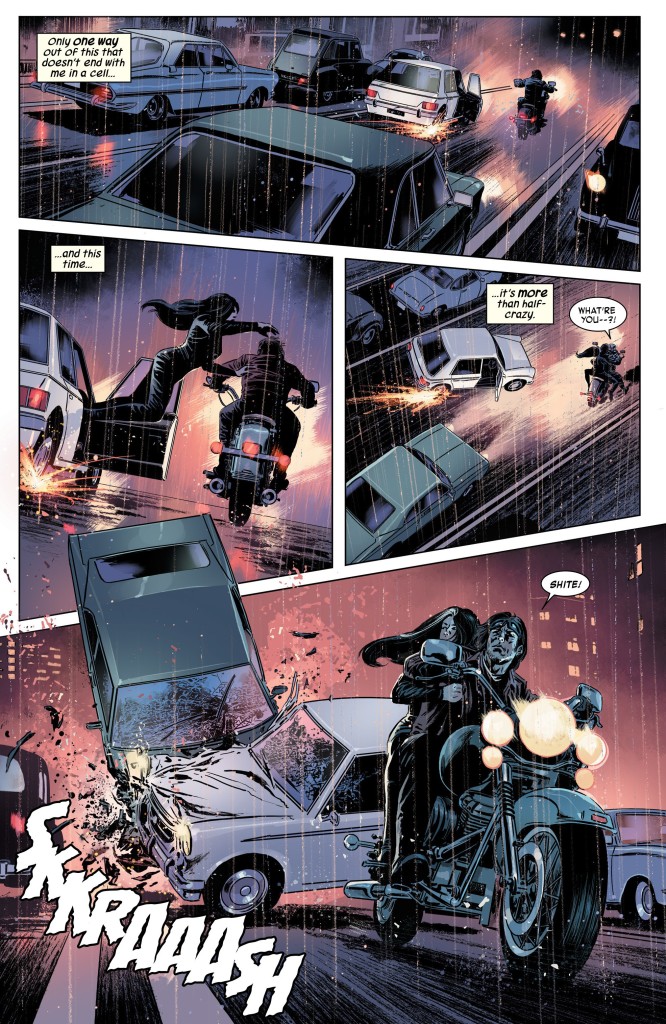Every once in a while, I like to shift gears and spotlight comics or films set outside Gotham City. Once a year, I take this one step further and devote a whole month to non-Batman comics.
This time around, I want to focus on one of my all-time favorite genres: spy fiction.
It’s not hard to see why espionage has become the source of so many gripping tales. Besides the thrill of being allowed into an exclusive club of people who secretly shape our collective destiny, there are all kinds of storytelling devices embedded into the genre’s premise – after all, you know there is always something underneath the surface and a plot twist waiting around the corner because the key characters, almost by definition, lie and deceive for a living, manipulating their audience while hiding who they are.
The Cold War gave a big boost to this genre, not only because every corner of the world seemed to be a potential target of intelligence networks and covert operations, but also because a number of outstanding works left a long-lasting mark on pop culture – movies like North by Northwest and Dr. No, television shows like Mission: Impossible and Tinker Tailor Soldier Spy, the novels of Len Deighton and John le Carré. Even though there is plenty of spy fiction being written today, much of it still goes back to those seminal texts and, in fact, much of it is still set during that era when agents had to rely more on their wits than on their computers.
With that in mind, this week I will spotlight a couple of recent comic series that revisited the underworld of Cold War cloak and dagger.
THE COLDEST CITY / THE COLDEST WINTER
2012’s graphic novel The Coldest City, written by Antony Johnston and illustrated by Sam Hart, is a tight, labyrinthine mystery yarn set in Berlin during the days leading up to the fall of the wall. After the murder of an MI6 officer, London sends agent Lorraine Broughton to track down a Stasi list with the names and positions of every spy in town, but – as is usually the case in this kind of stories – nothing is entirely what it seems.
As a tale of espionage, The Coldest City falls into the John le Carré mold, with most of the action consisting of long, cryptic conversations between people who know the game and are slightly tired of playing it. The fun is not just figuring out what everyone is saying through their tradecraft talk, but also figuring out what they are *not* saying (yet probably implying). Despite the occasional shootout, this is more of a book of subtle clues and dead drops in dark alleys.
While Antony Johnston doesn’t go as far as le Carré in terms of characterization – the characters here are essentially chess pieces – he still provides neat little touches, as the local agents keep acting condescendingly towards Lorraine because a) she is a woman in a boys’ club, b) she has a less than perfect command of the German language, and c) she has never operated in Berlin. (In the tradition of classics like The Spy Who Came in from the Cold and Funeral in Berlin, the comic presents this German city as the beating heart of the Cold War, hence the title.)
Between the codename-heavy dialogue, the realistic vibe, the likable British female lead, and Sam Hart’s high-contrast art, it’s hard not to compare The Coldest City to Greg Rucka’s masterful spy comic Queen & Country. That said, this book does get bonus points for the 1989 setting, exploring that Cold War stage when various members of the intelligence community were beginning to suspect the glory days were behind them and the world as they knew it was coming to an end.
Last year, Antony Johnston delivered another cynical noirish thriller set in Berlin, starring a few of the same characters, with even more snow and shadows thrown in. The Coldest Winter, with art by Steven Perkins, takes place in the winter of 1981/1982 and revolves around an attempt to help an ill Russian scientist defect to the West. One of the many challenges is that the city’s trains and planes are grounded because of the weather, so the MI6 must keep the old man hidden for a while and the whole thing turns into a clever game of cat-and-mouse.
VELVET
With its gimmicky gadgets, stylish cars, and kinetic action scenes, Velvet falls more on the Ian Fleming end of the genre’s spectrum, albeit with some modern revisionist twists (the high concept is usually described as ‘What if Miss Moneypenny was James Bond?’). In the early 1970s, Velvet Templeton, a former secret agent turned secretary for ARC-7 (a remnant of an Allied espionage group from World War II), goes back in the game to investigate the murder of ‘the best field op in the world’ and ends up unraveling a conspiracy within her own organization.
The series is written by Ed Brubaker, who, in his typical more-tell-than-show approach, crafts a well-rounded, genuinely kickass protagonist. What makes this such a damn fine read though, is the luscious look courtesy of artist Steve Epting and colorist Elizabeth Breitweiser… Velvet may not have anything particularly deep to say about Cold War politics, but – much like Jean-Christophe Thibert’s Kaplan & Masson books or Alex de Campi’s, Tony Parker’s, and Blond’s Codename: Felix series (starting with Mayday) – it effectively draws on the era’s aesthetics and resonance in popular imagination to provide a cool background for globetrotting intrigue full of quasi-cinematic fights and chases.
Ed Brubaker had already proven his superior skill at plotting paranoid super-spy narratives with Sleeper and his run on Captain America (the latter also illustrated by Steve Epting). Here, however, he drops the goofy masks and magical elements as he embraces glamorous high adventure.
Fast-paced yet with an impeccable sense of mise-en-scène, sexy yet not quite sleazy, slick yet with close attention to period detail, Velvet is as moody and elegant as it is thrilling!
NEXT: More spy comics.

